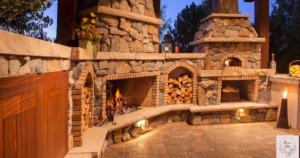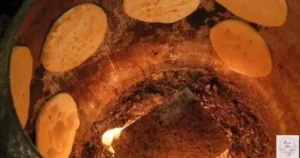Welcome to the interesting world of Chicago’s brick oven operation! Have you ever considered the complex mechanics behind these gastronomic marvels? Join us as we investigate the inner workings of Chicago brick ovens, including the dynamics of wood-fired cooking, refractory materials, and temperature distribution.
In this article, brick oven operation, wood-fired oven functioning, and pizza oven mechanics can provide you with crucial insights into how these classic ovens produce beautiful delicious foods. Let’s discover the secrets together and realize the full potential of Chicago brick oven cookery!
History and Origin of the Chicago Brick Oven
Chicago, recognized for its many culinary influences, has a long history of brick ovens. The brick oven became a fixture in many houses and businesses in the late nineteenth century as the city began swaying with immigrants.
Immigrants from Europe, especially Italy, carried the custom of wood-fired brick ovens with them. These ovens, essential to the European culinary scene, have found a new home in Chicago. The city’s citizens immediately adopted this manner of cooking, attracted by the unusual flavor and crispiness it imparted to food, particularly pizza.
The Evolution in Design
As demand for brick oven meals grew, creativity was needed. Local artisans began experimenting with designs, which resulted in the development of the now-famous Chicago Brick Oven. The dome-shaped construction of this design allowed for consistent heat variation, resulting in properly cooked food every time.
The Unique Design: Why It Stands Out
The Chicago Brick Oven is a synthesis of history, innovation, and the city’s determined spirit. Let’s look at some of its distinguishing design features:
- Cooking consistency is ensured by the dome shape, a distinguishing feature of the Chicago Brick Oven. This means the food, whether pizza, bread, or another delicacy, cooks evenly, avoiding uneven patches or sogginess.
- Heat Retention: Because they are made of high-quality bricks and materials, these ovens can keep heat for extended periods. This eliminates the need for continual fuel and ensures that the oven maintains a steady temperature throughout the cooking process.
- Chicago Brick Roasters are renowned for their strength since they are built to last. The selection of high-quality materials assures that these ovens will last for many years and provide years of enjoyable cooking experiences.
- Flavor Enhancement: The wood-fired nature of these ovens gives a distinct smoky flavor to food, which food supporters appreciate. Combining the wood’s scent and the oven’s design enhances the entire dish’s flavor, making it popular among chefs and foodies.
The Legacy Continues
Chicago Brick Ovens have been a symbol of community, togetherness, and superb food throughout the years. Families and friends frequently gather around these stoves to share tales, laughter, and delicious food.
Restaurants proudly display their brick oven-delicious foods, and lengthy lines of excited patrons wait to experience a part of Chicago’s culinary legacy.
Furthermore, the city holds some festivals and events themed around brick oven food, celebrating its illustrious past and the wonderful memories it has helped to create.
How the Heating Mechanism Functions
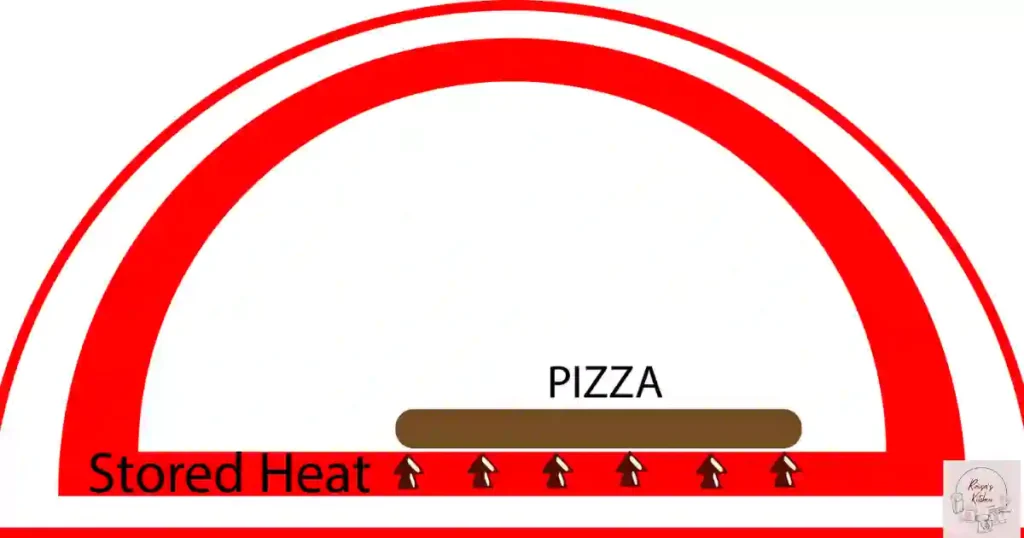
A brick oven’s heating process combines science and age-old traditions. Three key heat sources are responsible for the entire process:
- Conductive heat is the direct heat transmitted from the oven’s brick floor. When you set foot on the oven floor, it receives direct heat from the hot bricks.
- Radiant Heat: The fire heats the brick walls and dome as it burns. These bricks then uniformly pass on heat within the oven’s chamber. This radiating heat guarantees that the food is uniformly cooked on all sides.
- Convection Heat: As the fire burns, the air within the oven heats up, causing it to rise. The circulation of heated air within the oven guarantees that the food is surrounded by a steady temperature, which aids in uniform cooking.
Role of Brick in Heat Retention and Distribution
Bricks are essential to the efficiency of a brick oven. Their characteristics considerably improve the cooking process:
- Heat Absorption: Because bricks have a high thermal mass, they may absorb a lot of heat. This is critical for reaching and sustaining the high temperatures many brick oven recipes require.
- The capacity of the brick to absorb and reflect heat guarantees that the temperature within the oven remains steady. This reduces hot areas and ensures that food cooks evenly.
- Heat Retention: Bricks are good heat insulators. A brick oven can remain hot for hours after the fire has died down or been extinguished. This feature is perfect for foods that require lengthy cooking periods at a constant temperature.
Understanding the Cooking Process Inside the Oven
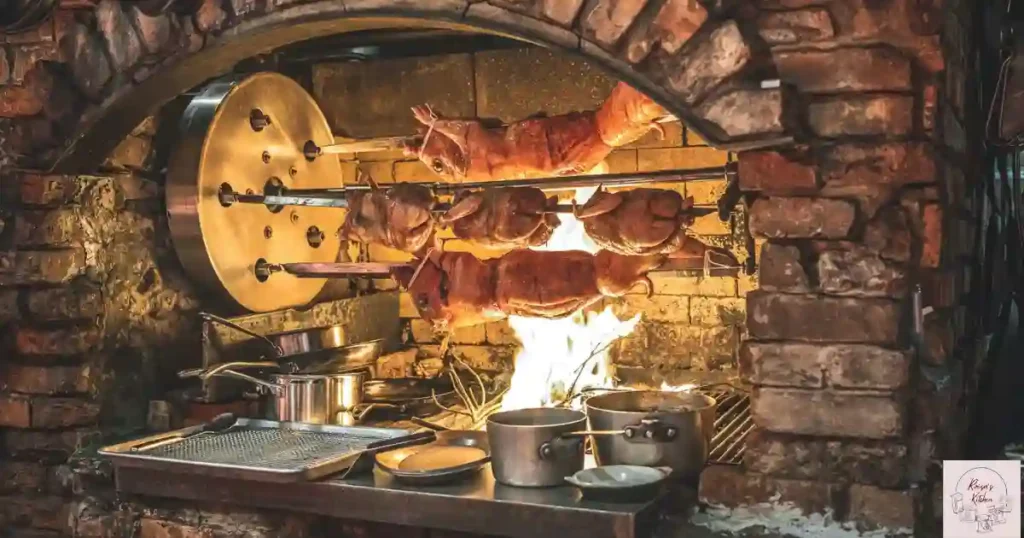
The cooking process inside a brick oven is a harmonic ballet of heat sources:
- The fire is lit in the first phase, usually done using hardwood. As the fire burns, the bricks begin to absorb heat. The floor of the oven becomes the principal source of conductive heat.
- Optimal Temperature: The fire burns, heating the oven’s walls and dome. Radiant heat is used to ensure the oven’s interior is consistently heated.
- Depending on the food, it can be cooked directly on the oven floor or in a cooking vessel. The food benefits from all three heat sources while it cooks. Pizzas, for example, benefit from the conductive heat of the floor, while the toppings are precisely cooked by the radiant and convection heat.
- Post-cooking: Once the item is done, it may be removed from the oven, and the oven will remain hot due to the heat retention capabilities of the brick. This leftover heat can be utilized to cook slower-cooking items or to bake bread.
The Secret to Chicago’s Distinctive Crust
The well-known pizza, recognized for its characteristic crust, is central to Chicago’s culinary pride. But what exactly is the secret? The Chicago brick oven is what it’s called.
With its innovative heating mechanism, this oven guarantees that the outer layer of the crust is crispy on the outside and soft on the inside.
The bricks’ high, homogeneous heat caramelizes the sugars in the dough, resulting in a slightly sweet, burnt flavor reminiscent of Chicago’s famed pizzas.
Benefits of Cooking in a Chicago Brick Oven
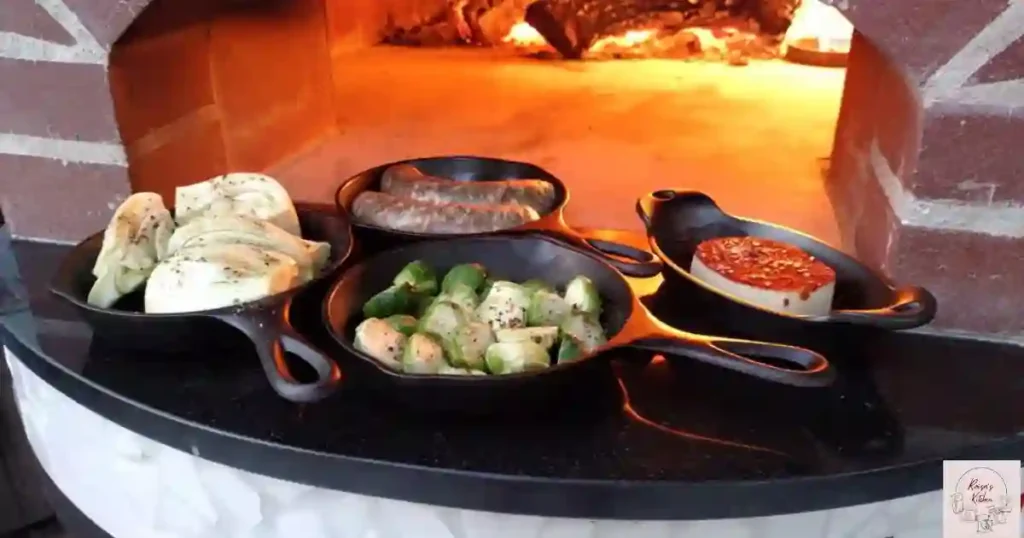
Using a Chicago brick oven isn’t just about heritage; it provides a slew of advantages that current cooking methods can’t match:
- Flavor Enhancement: Because these ovens are wood-fired, they lend a smoky, sweet flavor to the foods, improving their taste profile.
- Even Cooking: The design and brick material promote heat distribution, minimizing hotspots and ensuring consistently cooked food every time.
- Beyond pizza, these ovens are ideal for baking bread, roasting meats, and even grilling veggies, making them a versatile addition to any culinary enthusiast’s inventory.
- Energy Efficiency: Because of their higher heat retention characteristics, these ovens can cook for hours without extra fuel, making them energy efficient.
- Cooking at high temperatures results in quicker cooking times, more nutrients in the food, and less need for extra fats or oils.
Tips for Maintaining and Using Your Brick Oven
A Chicago brick oven is an appreciated asset that, with appropriate maintenance, may last for years. Here are some tips to keep it in good condition:
- Cleaning regularly: Remove ash and food remaining after each usage. This not only keeps things clean, but it also guarantees proper heat dispersion for the next time they’re used.
- Avoid using chemical cleaners, and instead use natural cleaning alternatives. Water and a firm brush are frequently sufficient. The chemicals may cause problems with the operation of the oven and taint food tastes.
- Inspection: Inspect the oven regularly for cracks or damage. While brick ovens are constructed to survive, frequent inspections ensure that small concerns are fixed immediately.
- Gradually heat your oven by starting with a tiny fire and allowing it to rise gradually. Rapid temperature variations can cause bricks to crack.
- Experiment with Woods: Each wood imparts a unique flavor. Experiment with oak, cherry, or hickory to uncover the distinct tastes that each imparts to your recipes.
FAQ’s
What exactly is a Chicago brick oven, and what separates it from other pizza ovens?
A Chicago brick oven is a type of pizza oven notable for its long-lasting construction and good heat retention, often composed of refractory bricks or clay. It stands out from other pizza ovens due to its design, size, and cooking capabilities.
How is heat distributed inside a Chicago brick oven?
Radiant heat from the fire below and the capacity of the refractory material to absorb and uniformly distribute heat throughout the cooking chamber are responsible for heat distribution in a Chicago brick oven.
What materials are commonly utilized to make a Chicago brick oven, and why?
Chicago brick ovens are frequently built with refractory bricks or clay, which offer exceptional heat retention capabilities. This maintains stable and efficient cooking temperatures.
Do Chicago brick ovens require any specific installation or configuration?
Yes, Chicago brick ovens may require a firm foundation or stand, enough ventilation, and sufficient separation from explosive things to function safely.
What kind of fuel may be used to run a Chicago brick oven?
Chicago brick ovens can be powered by wood, gas, or a mix of the two, depending on the model and user preferences.
How long does it take a Chicago brick oven to warm before cooking?
A Chicago brick oven normally takes 45 minutes to an hour to warm to the necessary cooking temperature, depending on the fuel type and size.
Is there a certain method for loading and unloading food in a Chicago brick oven?
Yes, placing food on a pizza peel and carefully putting it into the oven is a frequent method. To unload, use a pizza peel or equivalent equipment to remove the cooked food from the oven.
Can other meals beyond pizza be cooked in a Chicago brick oven?
Yes, Chicago brick ovens are flexible and may be used to prepare an extensive variety of meals, including bread, roasted meats, vegetables, and desserts.
How does the architecture of a Chicago brick oven affect its cooking efficiency?
A Chicago brick oven’s dome-shaped construction traps and circulates heat evenly, resulting in efficient and consistent cooking.
What are some regular maintenance activities needed to keep a Chicago brick oven in top condition?
Common maintenance activities include cleaning the cooking surface on a regular basis, inspecting the bricks for any fractures or corrosion, and maintaining appropriate airflow for effective combustion.
Conclusion: The Timeless Charm of the Chicago Brick Oven
The Chicago Brick Oven is more than simply a cooking appliance; it is a tribute to the city’s famous culinary history. Its classic design, along with the unmatched tastes it imparts, makes it an enduring icon of Chicago’s food tradition. Cooking in a Chicago brick oven is an experience that connects with heritage, flavor, and timelessness, whether you’re a seasoned chef or a home cook.
Explore more:
How long does it take to cook a pizza in a Chicago brick oven?
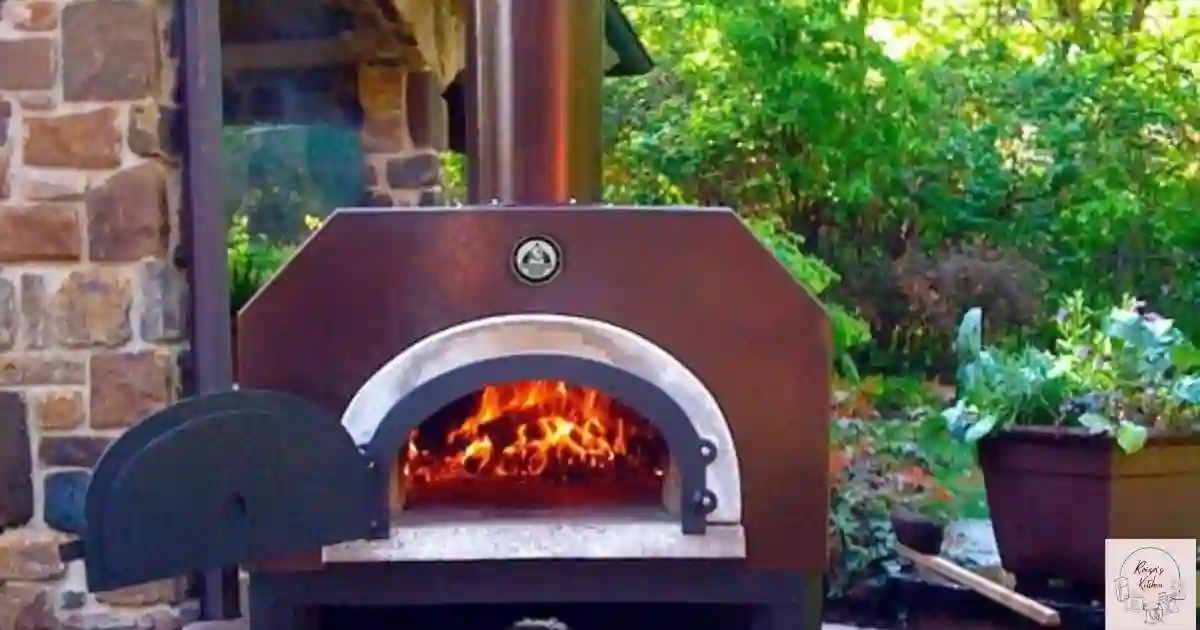
![Read more about the article How to Use Clay Oven for Baking Naan Breads? [Stepwise Guide]](https://raisaskitchen.com/wp-content/uploads/2024/02/How-to-Use-a-Clay-Oven-for-Baking-Naan-Breads-A-Step-by-Step-Guide-300x158.webp)
